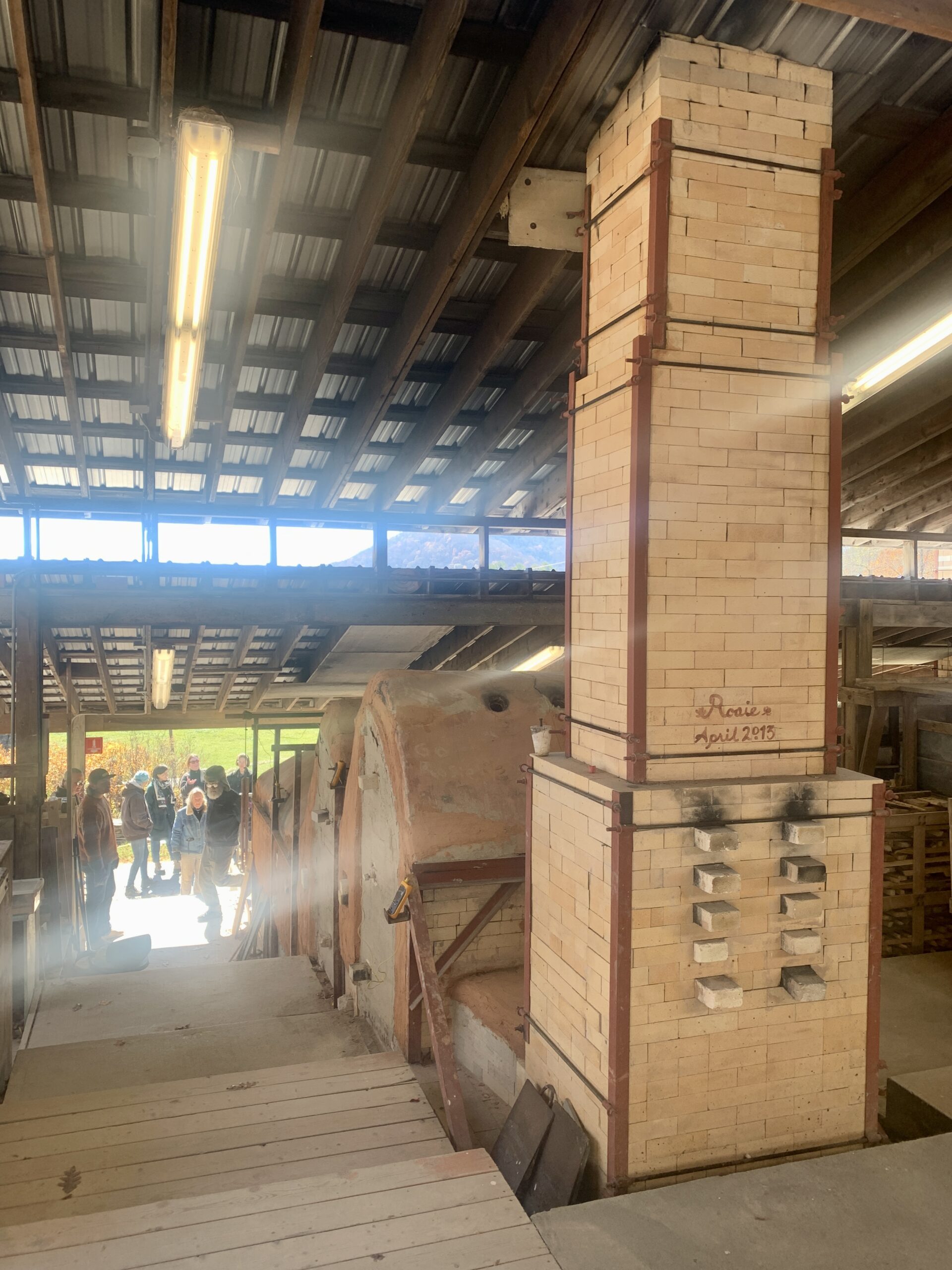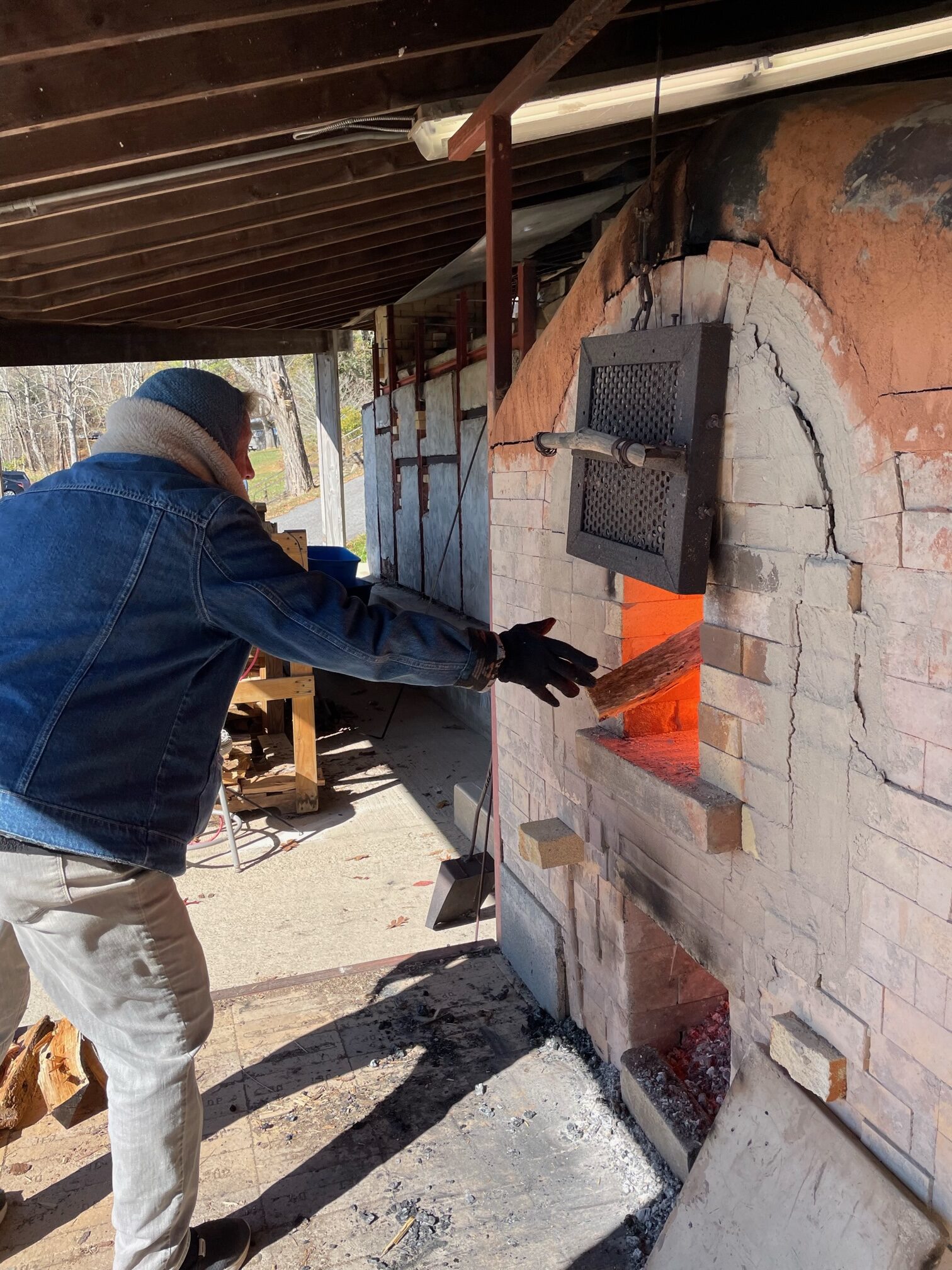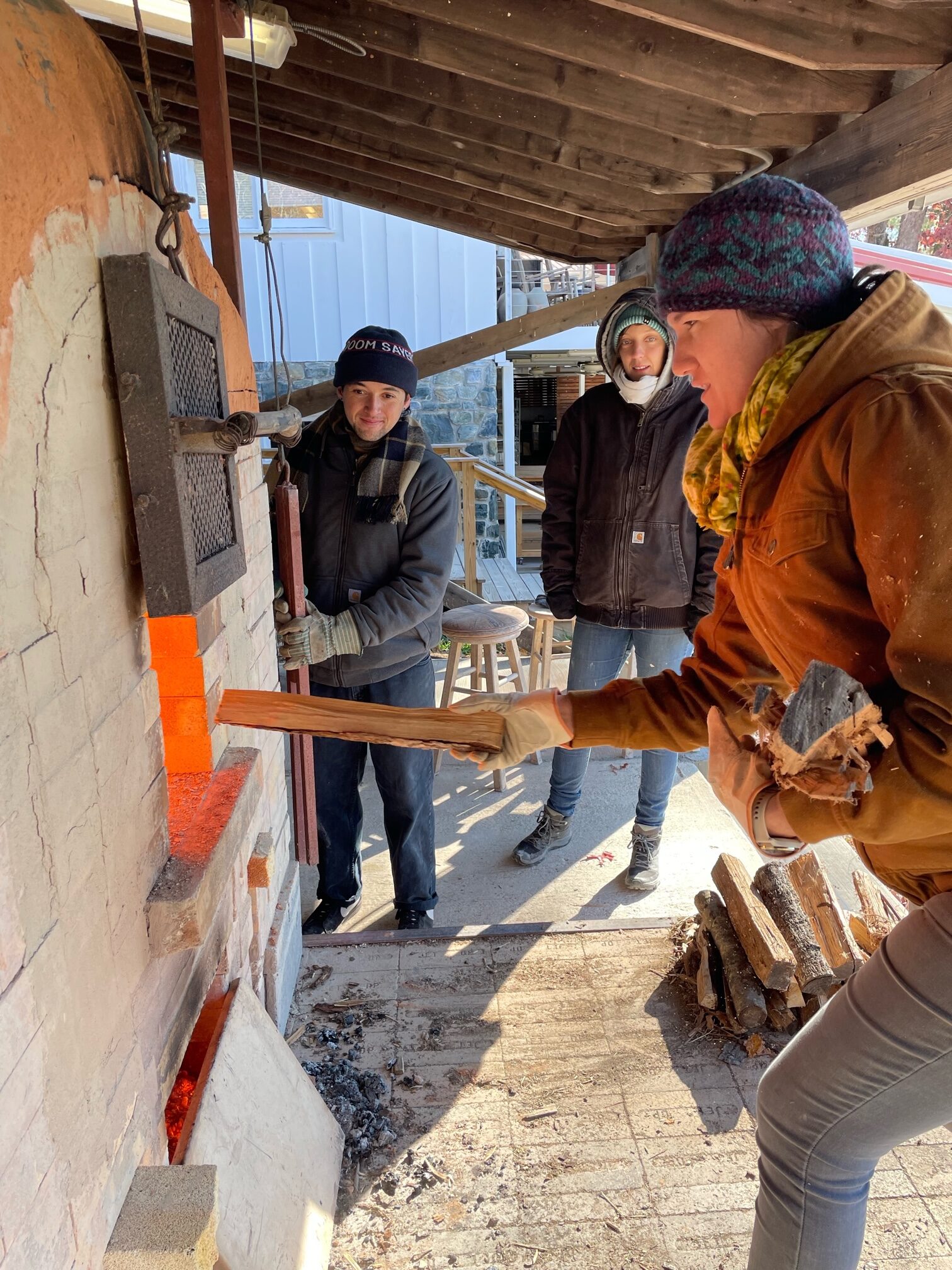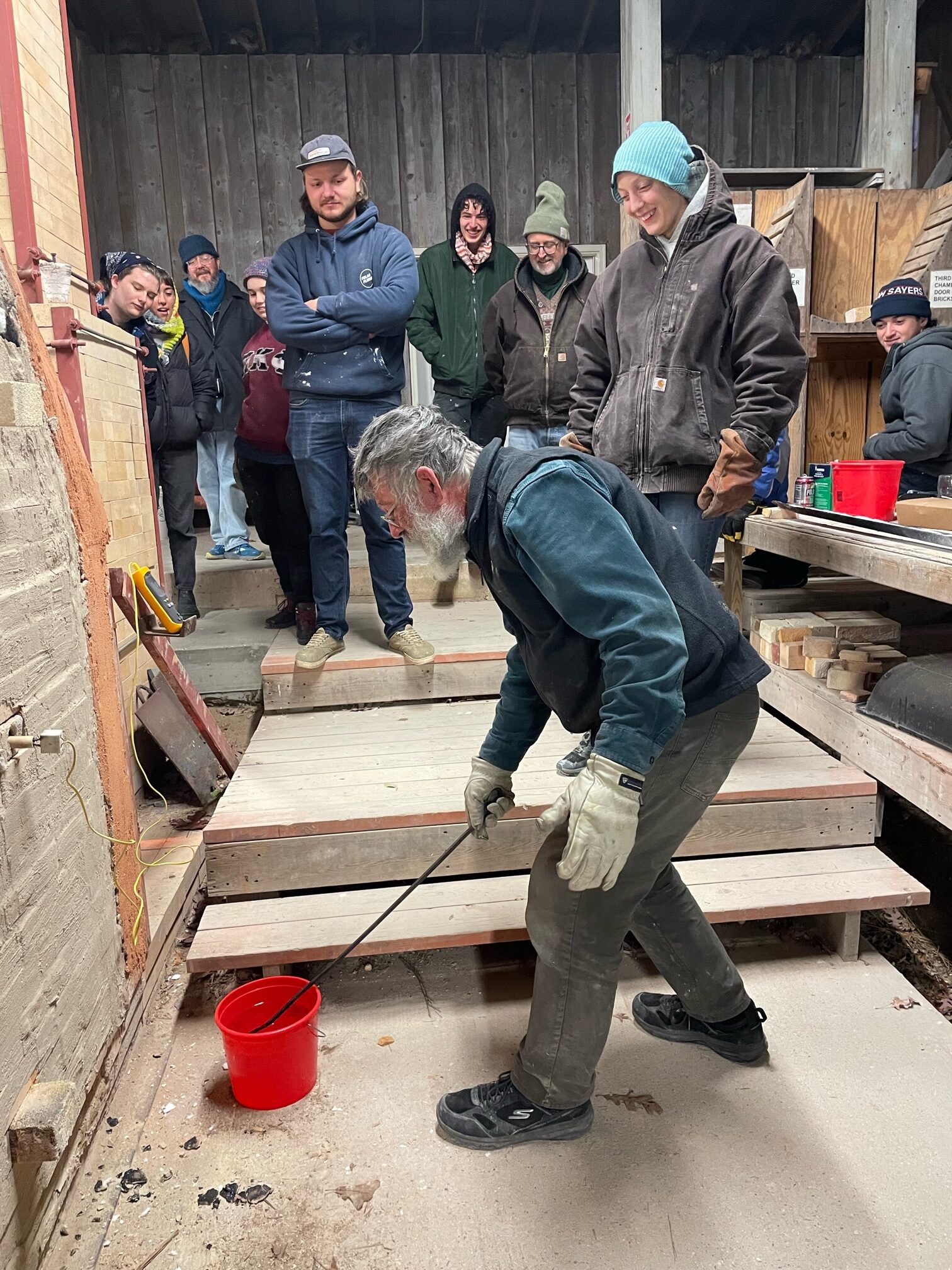
Wood firing at Penland is a time–honored tradition. We asked instructor Dan Finnegan, who is currently at Penland teaching a six-week concentration, to tell us more about this exciting undertaking:

Tell us about this recent wood firing?
This is a kiln that I built with a class ten years ago in 2013. I actually built the last two wood kilns here with Kevin Crowe who is a great potter in Virginia, so it’s kind of great to get back with this old friend of ours. This is a three chambered kiln.
We fired it very differently than it was intended to be fired. Usually when you load this kiln it’s full of big pots that are not decorated very highly. Then you fire the first chamber for three days and build up tons of wood ash on the pots and once that’s to temperature, then you stop stoking it and you move onto the next chamber. The waste heat from the first is preheating the next and the next.
That would normally be a two– to four–day firing, but this time we fired the wood kiln in a day. We made it do something that it wasn’t intended to do. It was a little bit of a challenge.

How did it go?
We think it went really well, but we won’t really know until we open the kiln. Then it’s either Christmas or you’ve been very bad that year. There’s probably 400 or 500 pots in there. It’s most of the work that we have made in this session. We only did three small firings in the Julia kiln, so this was an all our eggs in one basket kind of firing.

Did you fire more quickly to save time or to achieve a certain effect?
Probably both. We have been doing a lot of decorating with slips, etc. in this class, so those long firings would obliterate all the efforts we made. You have to marry the firing to the sort of surfaces you want.
We fired the kiln fast because we didn’t want a ton of wood ash on the pots. We wanted the heat from the wood. Wood does cool things. It flashes and reacts with the clays and makes beautiful random soft surfaces. I had a certain aesthetic in mind for the class and then we fired the kiln to achieve that aesthetic.

You’re the wood fire guy?
Well, there’s lots of wood fire potters, but I’ve been coming here and doing this for some time. I have a 50 year relationship with wood firing. This is all I do. I have a beautiful wood kiln that I built fifteen years ago and I’m going to fire it as long as I possibly can. I put salt in my kiln. Salt melts the brick so my kiln is melting.
Eventually, I may have to do something different. Eventually, I won’t be able to fire wood. Physically, it’s really a lot of work. From the preparation to the loading to the actual firing. I must have gotten down on my knees 300 times during this firing. I can do that. We had a great day, but my body is a wreck today. I only slept for two hours over a 48-hour period to nurse it along. It’s a very arduous process, but one that I love. What I really love is that it takes two days for the kiln to cool and that’s how long it takes me to get over the firing, haha. That’s true at home as well.

What’s it like doing a wood firing with students?
Wood firing is also really mentally engaging. You’re just putting wood in a hole, trying to get it to be 2,400 degrees. You’re trying to get it even. There’s certain times when you’re messing with the atmosphere. You’re trying to get it to be oxygen rich or oxygen depleted. Atmosphere affects the surface of the pots, so there’s lots of little decisions all the time and the challenge is the delightful cacophony of sixteen students who are all curious and want to know. At home, I live a very quiet life. I plan to go home and be really quiet when the session is over.
One of the great things about wood is that everybody has to be engaged. Everyone is putting wood in the kiln and in the shifts we have people do different jobs. Everyone is getting a taste of each part of it. And then they get to decide where they want to go when they leave here.

Interested in exploring wood firing at Penland?
Consider Matt Jones’ workshop this summer…
A very special thanks to student Lizzy Eichorn who took the wonderful photos featured in this story. Watch the video!



